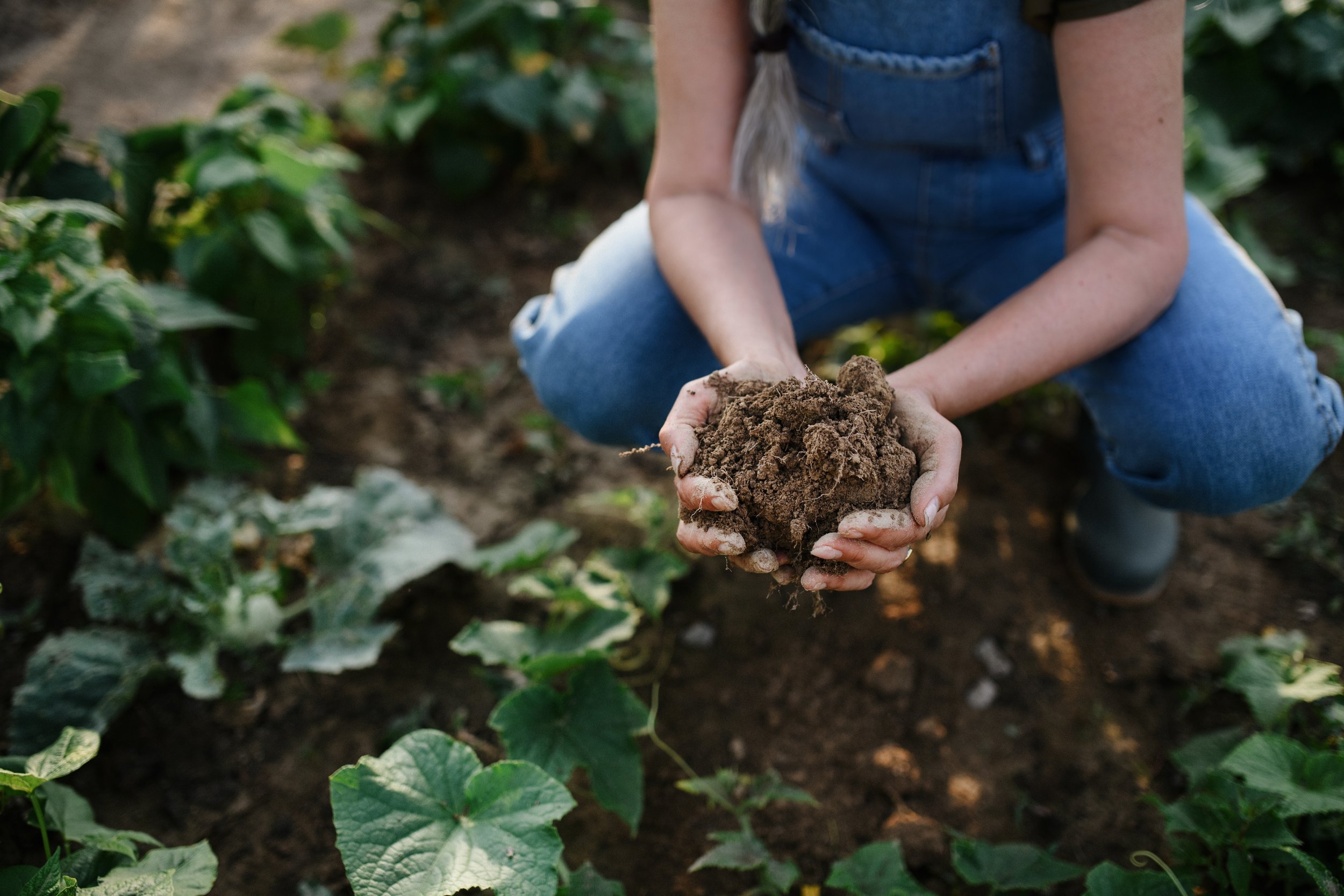
FAQ

Would you like to know more about Catapult Environmental? Read the FAQs below or contact us directly for more information.
-
Composting is a natural process of decomposing organic materials, such as kitchen scraps, yard waste, and other biodegradable items, into nutrient-rich humus. Humus is a dark, crumbly substance that enhances soil fertility and promotes plant growth. Composting is an eco-friendly way to recycle organic waste and reduce the volume of material going to landfills.
-
There are several composting methods, each suited to different settings and preferences:
Catapult uses a combination of Windrow Composting (for non-odour causing material such as leaf & yard waste) and industry leading technology, provided by our partner Sustainable Generation, called Covered Aerated Static Piles (CASP).
The CASP system features a primary cover provided by GORE®, which provides the highest odour protection of any available compost system. The cover features a pore size of approximately 0.2 microns preventing the transfer of any moisture, spores, microbes, VOC’s (Volatile Organic Compounds often responsible for odours), ammonia, dust, and other emissions while allowing for the transfer of oxygen, nitrogen, and other air related molecules.
• Windrow Composting: This method involves creating long, narrow piles of leaf & yard waste known as windrows. The windrows are periodically turned and mixed to ensure proper aeration and decomposition. Windrow composting is often used for yard waste, agricultural residues, and large quantities of food waste. Catapult uses Window Composting for yard waste and compost materials that have passed through the primary stages and have no associated odour.
Other types of composting are:
• Aerated Static Pile Composting: In this method, organic waste is placed in static piles equipped with a system of pipes that supply controlled amounts of air. The aeration enhances microbial activity, accelerating the composting process. This technique is suitable for a wide range of organic materials, including food waste and biosolids.
• In-Vessel Composting: This approach involves using closed containers or vessels to compost organic waste. The vessels provide better control over temperature, moisture, and aeration, which leads to faster composting. In-vessel composting is commonly used for food waste and other organic materials generated in commercial and industrial settings.
• Tunnel Composting: Tunnel composting employs long, enclosed tunnels or halls where organic waste is piled and periodically mixed. The controlled environment helps regulate temperature and moisture levels, creating favorable conditions for decomposition. This method is particularly suitable for high moisture-content waste, such as sludge and food processing residues.
• Digestate Composting: Digestate is the solid material remaining after anaerobic digestion. This method involves taking the digestate and composting it further to produce a stable and nutrient-rich product. The composting process helps eliminate any remaining pathogens and allows for beneficial changes in the compost's structure.
• Forced Aeration Composting: This method involves using blowers or fans to force air into compost piles, ensuring efficient oxygen supply for microbial activity. Forced aeration enhances the composting process and reduces the time required for compost maturation.
-
We collect composting materials through our partner municipalities and transport companies. If you are looking for tips or solutions for managing food waste diversion in your home, or are a municipality considering a diversion program, please contact us and our staff will help!
-
Composting has several positive impacts:
• Waste Reduction: Composting diverts organic waste from landfills, reducing the amount of methane, a potent greenhouse gas, released into the atmosphere. By reducing the amount of organic waste in landfills municipalities can double or more the life of their landfill and reduce overall operations costs.
• Soil Enrichment: Compost enhances soil structure, water retention, and nutrient content, improving plant growth and crop yield.
• Ecosystem Health: Composting encourages biodiversity and beneficial soil organisms, fostering a healthier environment for plants and animals.
• Resource Conservation: By recycling organic waste into compost, we conserve valuable resources and reduce the need for synthetic fertilizers.
In some cases, composting facilities have caused odour or nuisance issues for their neighbors and have negated the positive impacts. Catapult has partnered with reputable and leading companies to ensure that our communities enjoy the positive impacts without any nuisance or odour issues. We take great pride in our operations, safety, and compliance records.
-
Anaerobic digestion (AD) is a biological process that breaks down organic matter in the absence of oxygen. It occurs naturally in marshes, swamps, and the digestive systems of animals. In controlled environments, AD is harnessed to treat organic waste and produce biogas.
The AD process involves the following stages:
• Feedstock Preparation: Organic waste, such as food scraps, manure, and agricultural residues, is collected and prepared for digestion at Catapult’s facility. All of Catapult’s processing of organic waste happens indoors in a negative pressure building – as the doors are opened air rushes into the building instead of out. The air is then treated and released through an advanced filtering system with built in redundancy.
• Digestion: The waste is placed in a sealed, oxygen-free digester tank. Anaerobic bacteria break down the organic matter into biogas and digestate.
• Biogas Production: The biogas produced during digestion is primarily composed of methane (CH4, 55-70%), Carbon Dioxide (CO2, 29-44%), hydrogen sulphide (H2S 0.03% - 0.1%), and other trace gases such as nitrogen (N2). The H2S is first removed using an amine based solvent – where it is then held in liquid form and sent to a registered waste facility for disposal. Then the CH4 is purified by a membrane system with the remaining CO2 either released or liquified for use in dry ice. The final purified CH4 is identical to Natural Gas and is injected into the local utility grid for local use.
• Digestate Treatment: Digestate is stored in a covered tank to ensure no odours or emissions occur. Periodically the digestate will be dewatered using a polymer and centrifuge system separating it into a liquid stream and a solids stream. The solids stream will be mixed into compost where it adds valuable nutrients to the end products. The liquid stream is further processed and the water recycled back into the process.
-
Regulations for anaerobic digestion facilities vary depending on the region and local laws. Catapult’s facilities in Alberta are regulated by Environmental Protection Alberta as “Waste Management Facilities” and are located in Industrial Zoned areas.
-
Catapult has partnered with design experts with a proven track record of building and operating facilities in close proximity to residents without issues. Our facility only processes raw organic waste indoors and all holding tanks are covered. However, adequate management and maintenance are crucial to ensuring odor control and preventing any potential nuisances to nearby communities and Catapult stands by our track record of operations. If you have any concerns, we want to talk with you.
-
The remaining material after digestion is called digestate which will be stored in covered tanks. After storage the water will be recycled back into the process and the odorless solids will be mixed into compost. The final compost will be nutrient-rich and can be used as an organic fertilizer and soil amendment.
-
Catapult Environmental is an environmental operations company that specializes in sustainable water management, waste management, composting, anaerobic digestion, and renewable energy solutions. It aims to help businesses, communities, and organizations minimize their environmental impact and promote a circular economy by converting organic waste and water into valuable resources.
-
Catapult was founded in 2016. Its creation was fueled by a vision to address the pressing environmental challenges posed by increasing waste generation and a lack of cost-effective processing solutions. The company was established by a team of experts in environmental engineering and waste management.
-
Catapult Environmental serves a diverse range of sectors, including but not limited to:
• Agriculture: Providing sustainable waste management solutions for farms and agricultural facilities.
• Food Industry: Assisting food manufacturers, restaurants, and grocery stores in diverting organic waste through composting and anaerobic digestion.
• Municipalities: Collaborating with local governments to implement efficient waste management strategies and promote recycling initiatives.
• Industrial and Commercial: Offering tailored waste management and sustainability solutions for various industrial and commercial sectors.
-
Catapult Environmental has multiple facilities located strategically to serve different regions. Please visit the operations page to learn more about our facilities
-
Catapult Environmental headquarters are located at:
-
Phone: 1-587-393-6329
Email: AP@catapultenv.com
Website: https://catapultenv.com/
Physical Address: Suite 1620, 700 9th Ave SW (South Tower). Calgary, AB T2P 3V4
-
For general queries about Catapult Environmental, you can reach out to their customer service team at info@catapultenv.com . They will be happy to assist you with any inquiries.
-
If you have any complaints or concerns, you can direct them to Catapult Environmental's facility managers or head office. They will address your issues and work to resolve them in a timely and satisfactory manner.
-
To learn more about Catapult Environmental's sustainability initiatives and environmental plans, you can read the annual ESG report
